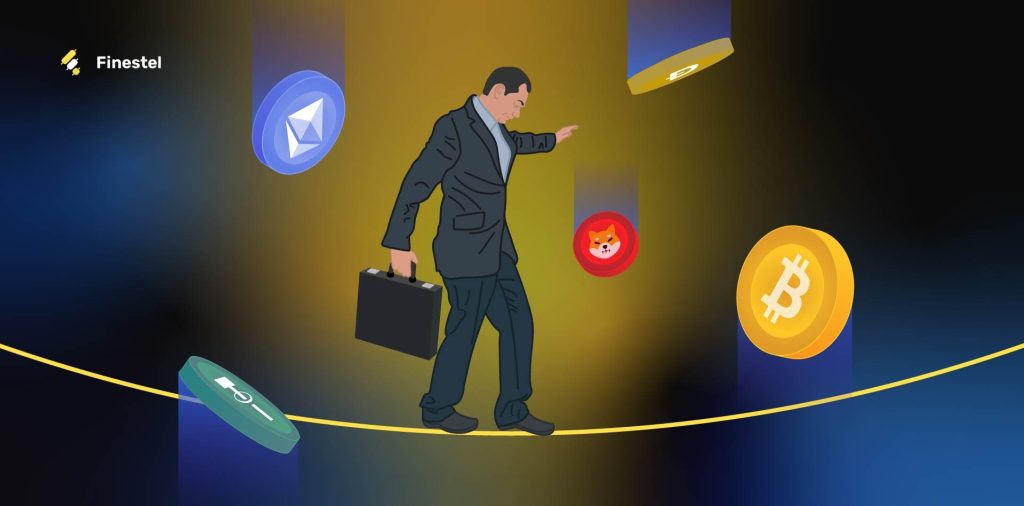In the ever-expanding world of cryptocurrency investments, few concepts stir as much debate as lock-up periods and vesting schedules. For seasoned venture capitalists in traditional finance, these mechanisms are familiar safeguards designed to align incentives between founders, early investors, and the broader market. But in the fast-moving and often unpredictable world of crypto, lock-ups and vesting arrangements can have a profound impact on token price stability, investor trust, and long-term project viability.
While these mechanisms are intended to ensure stability and prevent immediate dumping, they can just as easily create significant risks for early investors. To fully understand the implications, we must look at what vesting schedules mean, how unlock events affect prices, and real-world case studies that demonstrate both successes and failures.
1. What Are Lock-Up Periods and Vesting Schedules?
At their core, lock-ups and vesting schedules determine when and how early investors, team members, and advisors can sell their tokens. These mechanisms control token circulation and aim to avoid market flooding that could destabilize prices.
1.1 Lock-Up Periods
A lock-up period is a predetermined time frame during which tokens allocated to insiders—such as team members, advisors, and private investors—cannot be sold or transferred. These periods often last between 6 to 48 months, depending on the project.
- Purpose: Prevents early investors from selling immediately after launch, which could crash the token price.
- Drawback: Creates uncertainty for retail investors who fear a sudden wave of selling when the lock-up ends.
1.2 Vesting Schedules
Vesting adds an additional layer of control by releasing tokens gradually over time. Instead of a single unlock event, tokens are distributed in increments (monthly, quarterly, annually).
- Cliff Vesting: A one-time release after an initial lock-up period (e.g., 25% of tokens unlocked after 12 months).
- Linear Vesting: Tokens are released gradually, such as 1/36th of the allocation every month for three years.
- Hybrid Models: Some projects combine cliffs and linear vesting to balance stability with liquidity.
These mechanisms are designed to ensure that founders and investors remain committed long-term, while protecting retail buyers from immediate insider selling. However, the unintended consequences can be severe.
2. Why Do Unlock Events Impact Prices So Heavily?
One of the most pressing risks for early investors comes from the psychological and practical effects of token unlocks.
2.1 Market Supply Shock
When a large volume of tokens suddenly enters circulation, supply increases drastically. If demand doesn’t rise at the same pace, prices inevitably drop. Even the anticipation of an unlock event can create selling pressure as traders front-run the expected price decline.
2.2 Investor Psychology
Retail investors often panic when major unlocks are announced, assuming insiders will dump tokens at the earliest opportunity. This sentiment alone can spark a sell-off, regardless of whether insiders actually sell.
2.3 Liquidity Dynamics
Tokens with low trading volume are especially vulnerable. If a large unlock hits an illiquid market, even small sell orders can move prices significantly.
2.4 Long-Term vs. Short-Term Effects
Not all unlocks are catastrophic. Some projects absorb the impact smoothly when strong demand exists. However, in weaker projects, unlocks often trigger downward spirals that erode long-term investor confidence.
3. Case Examples: When Unlocks Shape Outcomes
Examining real-world cases provides insight into how lock-up and vesting mechanisms can either stabilize or destabilize projects.
3.1 The Cautionary Tale: Solana (SOL)
During Solana’s early days, venture capital firms and private investors received significant allocations. Despite strong fundamentals, concerns about token unlock schedules created market uncertainty. Every unlock event brought fear of price crashes, even though many investors held rather than sold. The perception of sell pressure became almost as damaging as actual selling.
3.2 The Crash Scenario: SafeMoon and Similar Tokens
In some speculative projects, early insiders were given massive allocations with minimal lock-up periods. As soon as liquidity was available, insiders dumped their holdings, leaving retail investors as exit liquidity. Without structured vesting schedules, these projects collapsed quickly, showing the dangers of weak tokenomics.
3.3 A Positive Example: Chainlink (LINK)
Chainlink distributed tokens over time with clear vesting rules. While early investors still gained significantly, the gradual release and steady ecosystem growth helped sustain prices. Unlocks did not create catastrophic dumps because demand for oracle services grew alongside supply increases.
3.4 The Mixed Example: Avalanche (AVAX)
Avalanche’s unlocks were closely watched because of its large initial allocations to private investors. While some dips occurred after unlocks, AVAX maintained a strong ecosystem and adoption curve, cushioning long-term impacts. This demonstrates how ecosystem strength can mitigate unlock risks.

4. Strategies for Early Investors Facing Unlock Risks
Understanding risks is the first step; acting on them is the second. Here are strategies early investors can employ to protect themselves:
4.1 Analyze Tokenomics Thoroughly
- Review the vesting schedules in whitepapers.
- Identify allocation breakdowns: What percentage goes to the team, advisors, VCs, and public sales?
- Look for imbalances: If insiders hold 60–70% of supply, risk is high.
4.2 Monitor Unlock Calendars
- Platforms like Token Unlocks App provide real-time data on upcoming unlocks.
- Staying ahead of unlock events allows investors to adjust positions before the market reacts.
4.3 Focus on Ecosystem Strength
- Strong adoption, partnerships, and real-world use cases create demand that absorbs token supply.
- Projects with little utility outside speculation are most vulnerable to unlock-induced crashes.
4.4 Diversify Exposure
Avoid concentrating investments in tokens with heavy insider allocations and aggressive unlock schedules. Diversification reduces the impact of one project’s price collapse.
5. The Broader Implications for Crypto Markets
Lock-ups and vesting schedules go beyond individual investor risk; they shape the overall maturity of the crypto market.
- Positive Implications: Properly structured vesting schedules align incentives, ensuring founders and VCs have skin in the game. They promote stability and encourage long-term building.
- Negative Implications: Poorly designed unlocks fuel volatility, damage investor trust, and reinforce the perception that crypto markets are “rigged” in favor of insiders.
As regulatory scrutiny increases, more projects may adopt transparent and fairer vesting models, benefiting both early and retail investors.
6. Looking Ahead: Can Vesting Evolve to Protect Everyone?
The crypto industry is still learning how to balance insider rewards with market fairness. Future vesting models may evolve in several directions:
- Dynamic Vesting: Adjusting schedules based on market conditions or project milestones.
- Community-Governed Unlocks: Allowing decentralized governance to vote on whether tokens should be unlocked at specific times.
- Performance-Based Vesting: Tying token unlocks to measurable achievements (e.g., user adoption, transaction volume, or ecosystem growth).
Such innovations could make vesting more adaptive and equitable, reducing risks for early investors while still incentivizing project builders.
Conclusion
Lock-up periods and vesting schedules are double-edged swords. On one hand, they provide stability and incentivize long-term commitment from insiders. On the other, they create systemic risks for early investors, who may face price shocks when large token unlocks flood the market.
By understanding vesting structures, monitoring unlock events, and prioritizing projects with strong ecosystems, investors can navigate these risks more effectively. Ultimately, the key question remains: Are these mechanisms designed to build long-term value—or simply to enrich insiders at the expense of retail participants?
The answer lies not in marketing promises, but in the transparency and fairness of each project’s tokenomics.

























